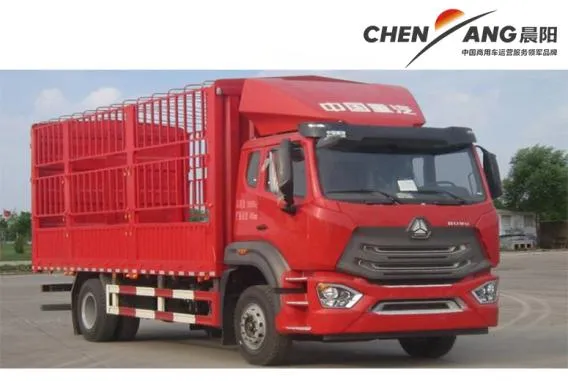Essential Components of Truck Chassis for Optimal Performance and Durability
Understanding Truck Chassis Parts A Comprehensive Overview
The truck chassis is the backbone of any commercial vehicle, providing the foundation for the truck's superstructure and supporting various components essential for functionality, durability, and safety. The design and construction of truck chassis parts are critical as they play a vital role in determining the vehicle's performance, load-carrying capacity, and stability. This article delves into the major components of truck chassis parts, their functions, and their significance in the overall structure of the vehicle.
1. Frame
The truck chassis frame is the primary structure that supports all other components of the vehicle. Typically made from high-strength steel or aluminum, the frame is designed to withstand significant stress and load while minimizing weight. There are generally two types of frame designs ladder frames and monocoque frames. Ladder frames, which resemble a ladder's shape, are common in heavy-duty trucks, offering great strength and versatility. Monocoque frames, on the other hand, integrate the body and chassis into one unit for lighter vehicles, providing better aerodynamics and fuel efficiency.
2. Suspension System
A truck’s suspension system is crucial for providing a smooth ride and ensuring vehicle stability, especially when carrying heavy loads. This system typically consists of springs, shock absorbers, and linkages. There are several types of suspension systems used in trucks, including leaf spring, coil spring, and air suspension. Leaf springs are commonly found in commercial vehicles due to their robust nature and ability to handle heavy loads, while air suspension provides a more comfortable ride by adjusting the height and load distribution dynamically.
3. Axles
Truck axles are pivotal components that transfer power from the engine to the wheels and support the weight of the truck and its cargo. There are two main types of axles front axles and rear axles. The front axle is responsible for steering and must be engineered for both strength and flexibility. Rear axles, on the other hand, often bear the majority of the truck's weight, and they come in various configurations, including single, dual, or tandem setups. The choice of axle design directly impacts the truck's load-carrying capabilities and maneuverability.
4. Braking System
truck chassis parts

The braking system is integral to the safety of any truck. Most trucks utilize air brakes, especially in heavy-duty applications, due to their efficiency and reliability. Air brakes work by using compressed air to apply pressure to the brake pads, effectively bringing the vehicle to a stop. In addition to the primary braking system, auxiliary systems such as engine brakes and exhaust brakes help slow the vehicle down while easing the strain on standard brakes, particularly when descending steep grades.
5. Drive Train
The drivetrain includes various components that transfer power from the engine to the wheels. It consists of the transmission, driveshafts, differentials, and wheel hubs. A robust drivetrain ensures that power is effectively managed and distributed, maximizing performance and efficiency. The choice of transmission type—manual or automatic—can influence how the driver interacts with the vehicle, affecting both performance and fuel economy.
6. Fuel Tank and Exhaust System
The fuel tank is a fundamental part of the chassis that stores fuel necessary for the truck's operation. The capacity and placement of the fuel tank are crucial, as they influence the truck's overall range and weight distribution. Alongside, the exhaust system is vital for controlling emissions and ensuring the engine runs optimally. A well-designed exhaust system minimizes back pressure, which can enhance engine performance and fuel efficiency.
7. Electrical System
Modern trucks are equipped with advanced electrical systems that control everything from lighting to engine management and driver assistance features. A well-functioning electrical system is critical for safety and operational efficiency. Components like batteries, alternators, wiring harnesses, and control units form the backbone of a truck's electrical architecture, addressing both conventional and high-tech applications.
Conclusion
Understanding truck chassis parts is essential for anyone involved in the operation, maintenance, or design of commercial vehicles. Each component plays a significant role in the overall performance, safety, and efficiency of the truck. As technology advances and regulations evolve, the design and materials used in truck chassis parts will continue to develop, ensuring that trucks remain robust and reliable workhorses in today’s economy.
-
SINOTRUK HOWO 84 Electric Dump Truck for Eco-Friendly Heavy HaulingNewsJul.26,2025
-
The Fast 16-Gear Manual Transmission Assembly for Heavy TrucksNewsJul.25,2025
-
Mercedes Benz Actros 1848 42 Tractor Truck for Sale - Reliable PerformanceNewsJul.24,2025
-
High-Quality Water Pump Assembly for Sinotruk Trucks – Durable & ReliableNewsJul.23,2025
-
Premium Truck Engine Antifreeze Coolant Fluid for Heavy Duty VehiclesNewsJul.22,2025
-
FOTON View G7 Mini Bus: Affordable & Spacious TransportNewsJul.22,2025
Popular products

























